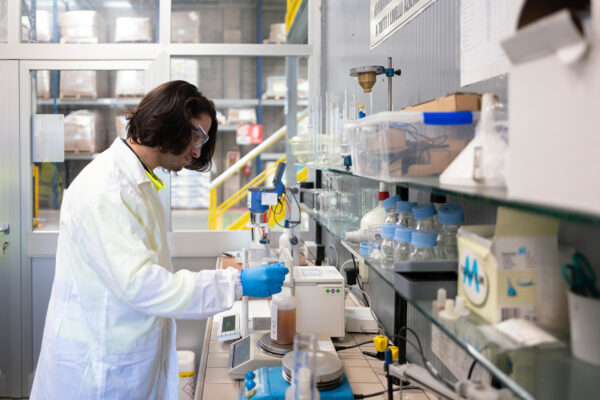How Chryso®V-MAR Transformed Concrete Finishability in Harsh Conditions

Facing tough jobsite conditions and increasing performance expectations, a concrete producer turned to a specialty admixture designed to enhance workability and finish quality. The result? A dramatic improvement in finish consistency, reduced cracking, and greater production efficiency—all without requiring major changes to their workflow.
Through feedback from concrete producers, contractors, and technical experts, this case study reveals how the product elevated both mix performance and on-site execution.
.
The Challenge
Producers and contractors often struggle with concrete that’s difficult to finish—especially in high evaporation environments or when using harsh aggregates and lower-carbon cementitious blends like Type 1L. Standard admixtures like evaporation retardants or silica-based additives provide surface-level benefits but often fall short in addressing internal consistency and long-term durability.
Key issues included:
-
- Slump loss and inconsistent workability
- Surface crusting and cracking under windy or dry conditions
- Higher pump pressures and labor fatigue
- Finishing problems with coarser aggregates or manufactured sands
The Solution
The team introduced Chryso® V-MAR, a viscosity-modifying admixture (VMA) formulated with a proprietary blend of biopolymers. Rather than just working on the surface, the admixture enhanced the entire concrete matrix by:
-
- Retaining internal moisture for better curing
- Reducing plastic shrinkage and crusting
- Lowering pump pressure for easier handling
- Improving the cream layer for smoother finishes
According to technical services, the product alters paste rheology, improving lubricity and placeability while reducing yield stress. This adjustment enables producers to maintain flow and stability, even when mix designs include low slump or harsh sands.
The Results
Both producers and contractors reported overwhelmingly positive feedback across a variety of applications, from flatwork and slipform paving to vertical structures and decorative finishes.
Producer Outcomes
-
- Workability: Improved mix responsiveness and extended open time
- Batching Efficiency: Fewer water adjustments; no major process changes needed
- Placement: Lower pump pressures and easier handling of coarse or low-slump mixes
- Quality Control: More uniform setting, reduced rework, and better alignment with client specs
- Sustainability: Compatible with Type 1L cement, aiding green building goals
Contractor Outcomes
-
- Finish Quality: Described as “beautiful” and highly uniform, even under high evaporation rates
- Labor Efficiency: Fewer finishing passes, reduced fatigue, and predictable set times
- Surface Durability: Fewer cracks and improved hydration leading to stronger surfaces
“Even in windy, low-humidity conditions, the mix remained consistent and easy to work with. We didn’t need extra tools or water. It just finished better—especially late in the day.”
Derek Wilson, Wilson Concrete & Construction
Key Takeaways
-
- Superior Finishability – Improves cream layer, reduces surface defects
- Pump & Place Efficiency – Lowers pump pressure and simplifies handling
- Weather Resilience – Performs in heat, wind, and low humidity
- Supports Low-Carbon Mixes – Works well with Type 1L cement
- Minimal Process Changes – Integrates seamlessly into batching routines
“It’s become a go-to for tough jobs. Helps us meet client demands without sacrificing crew energy. This product works through the whole mix, not just the surface. That’s a game-changer.”
Steve Degraeve, George J. Shaw Construction
Conclusion
In an industry where every placement counts, this finishability-enhancing admixture is helping teams push quality forward—without adding complexity. Whether it’s reducing cracks, improving hydration, or supporting the shift to greener cement blends, the product is proving to be more than just an additive—it’s a reliable performance partner.




